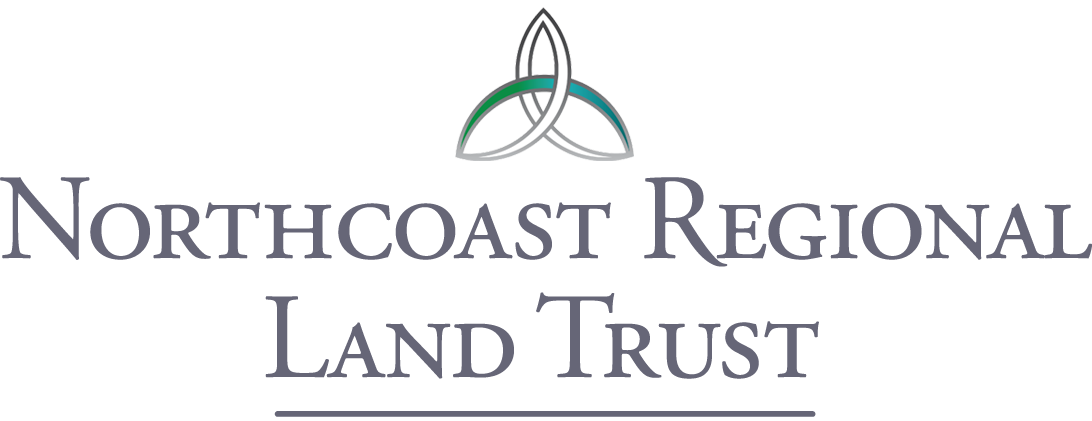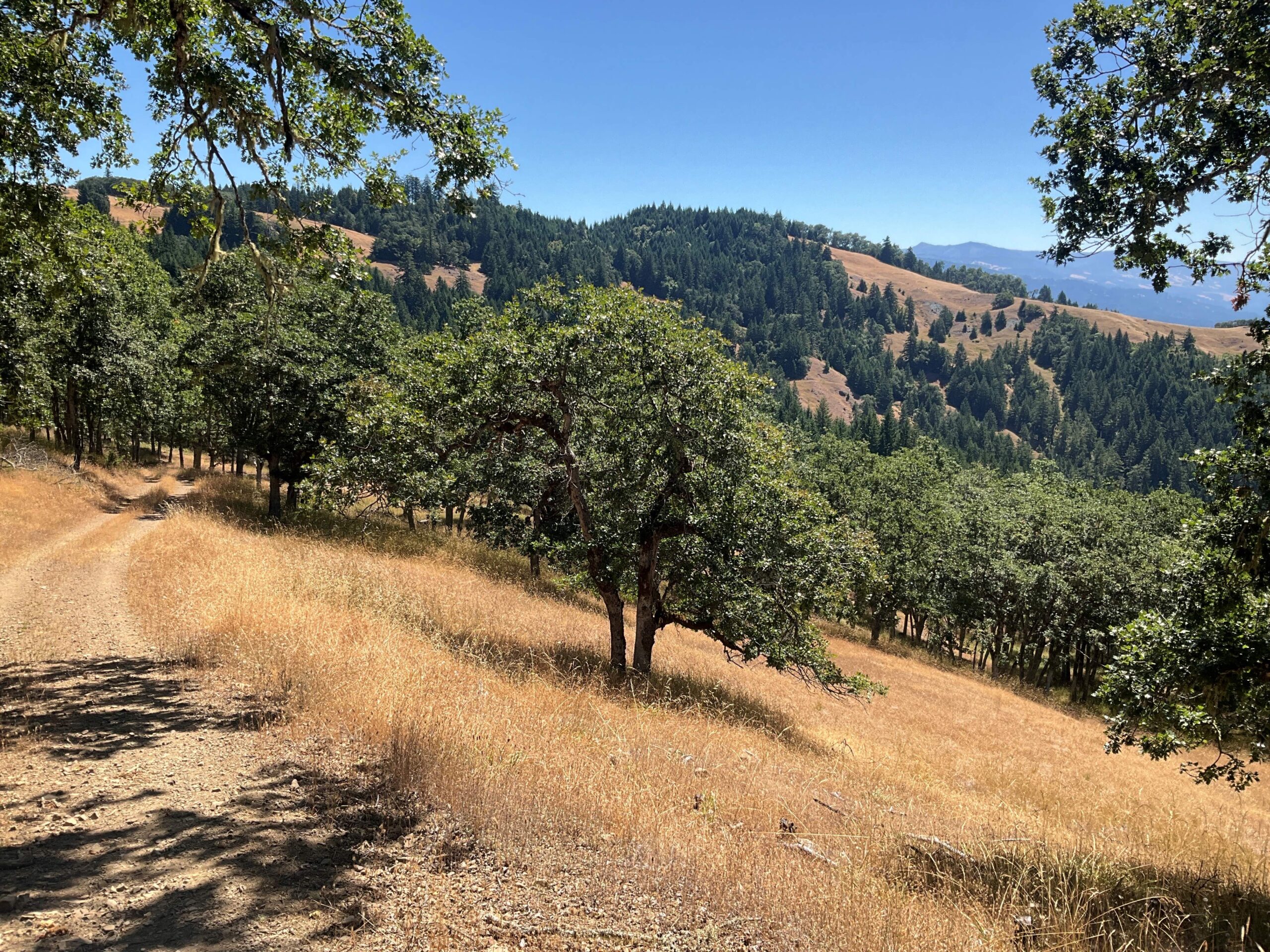Monitoring Season, Summer 2023
We arrived at Chalk Mountain Ranch a little later than planned and pulled into the large, dusty turn out at the base of the ranch. It was Monday morning, and already one of the logging trucks was out of commission and stalled at the entrance, giant hood flipped up with a team of men peering in and under it. Brandon, the 5th generation property owner, was on a mission to bring the right tools for the job and have this truck repaired and ready for the rest of the week. There’s a short window for harvesting in their Timber Harvest Plan, and there is plenty of work to be done before fire season set in.
We exchanged our hellos, commenting on the fine weather and scenic location of this 7000+ acre ranch in Southeastern Humboldt. Chalk Mountain Ranch has been home to the Barnwell family for the past 125 years, and each generation has worked hard to conserve it for the next. The Barnwell family put the first conservation easement on part of their property in 2010, and another easement on an adjacent tract in 2012– NRLT holds both and monitors them each year. Which is why we were there, on a Monday morning in July, parked in that wide turnout waiting for Brandon and Lauri, the owners and managers of the ranch.
Monitoring visits tend to be comprehensive tours of the property, conducted annually to check specific locations against years of photo points, and an opportunity to connect with the landowners – what’s really going on out here? “There’s been more elk lately,” Lauri has her eyes on every corner of this expansive ranch, from regular excursions to the cattle barns to a network of game cameras only she can find. Brandon, too, can tell you about the falcon nests that have been on Chalk Rock since at least his grandmother’s diary notes of the 1920s. They know this place, they love this place, they are this place.
It’s no easy feat managing a property of this size—feeding cows, managing timber, repairing roads, stewarding grasslands, and taking care of the many people who live and work on the land alongside them—but they do it with a sense of duty. Keeping it whole and productive is hard work, but the rewards for their family and the land that sustains them make it all worthwhile.
The past winter was rough, many of the landowners from this season’s monitoring have pointed it out. Even for us in town, there were weeks when I lamented if I’d ever see the sun again. But out on the ranch, a heavy winter means a heavier workload. Repairing barns and water lines, freeing cows trapped by fallen trees, supplementing feed longer than usual, clearing road after road after road just to get around. Even in July, there were obvious signs of the past winter—less important roads that are still impassable, washed-out creeks and fallen trees. We walked to one of the photo points, where a truck would have easily traveled in years past.
While I spend plenty of time out at Freshwater Farms Reserve, opportunities to see these privately conserved lands are rare and powerful. I was struck by the vastness of the landscape, and the work it takes to conserve it. After several hours of sightseeing and conversation, we headed back down the hill to where the day began. The broke-down truck was gone, but there was still a bustle of activity as people prepared for the week, years, and generations ahead.
Written by Nadia Van Lynn, NRLT Education and Outreach Manager
Thank you to Brandon and Lauri Barnwell for conserving and stewarding this land, and for approving the publication of this essay.
An excerpt from this essay was published in the Autumn 2023 newsletter.

